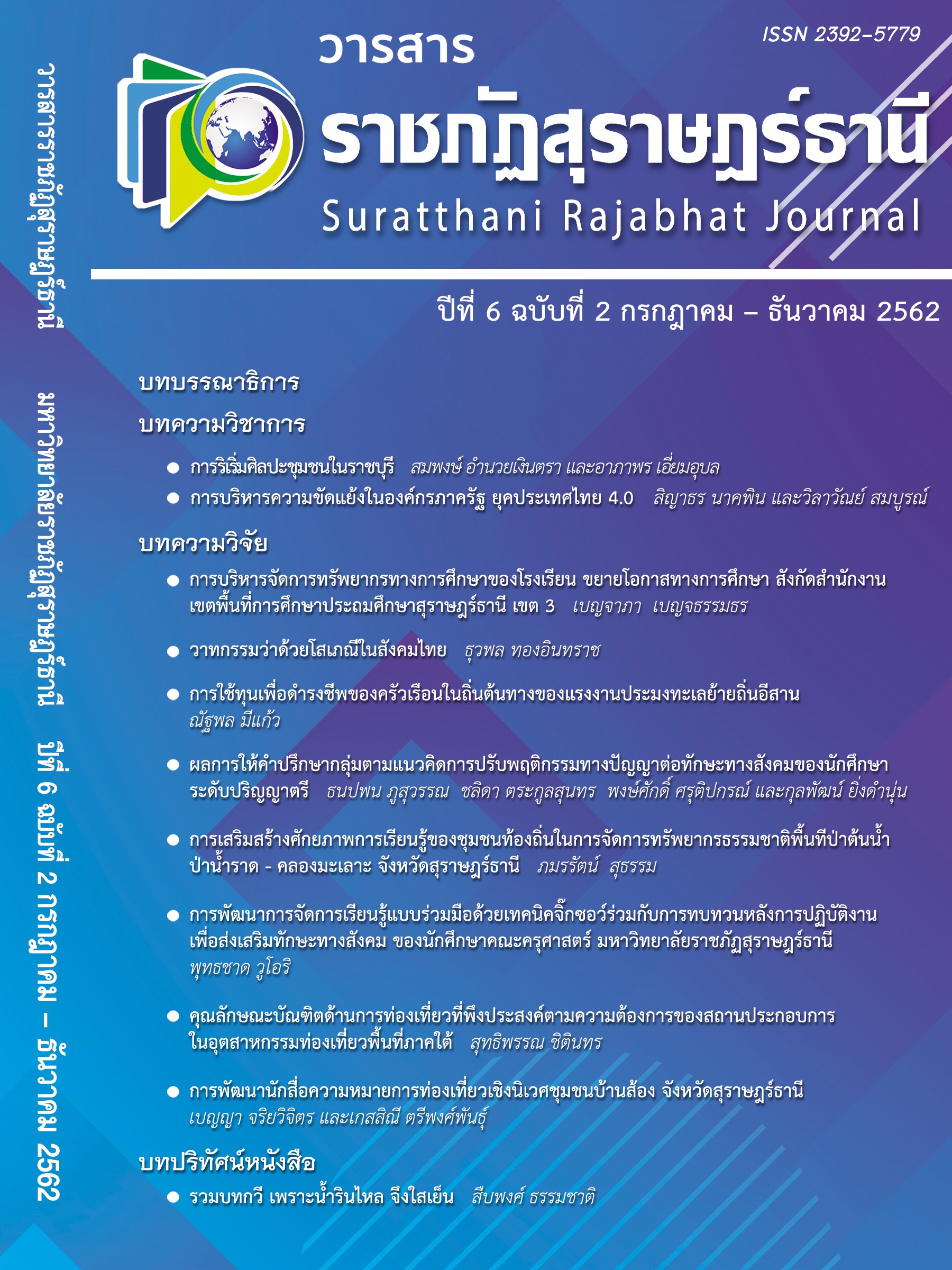Implementation of Livelihood Capital among the ESAN Fishing Migrant Households at Places of Origin
Main Article Content
Abstract
This article investigates implementation of livelihood capital of the marine fishing migrant households at places of origin. The article employed a qualitative methodological approach in the study. In-depth interview and participatory observation was used as research tools to collect data from twenty fishing migrant households who have lived in Tha Toom District, Surin province. The data collection period was during May to October 2017. The research findings revealed a variety of livelihood methods that the households implemented to sustain their livings. Livelihood methods were selected through household’s capital which they possessed. Livelihood capitals the households implemented composed of: 1) financial capital which was used to accumulate household’s asset; 2) human capital which was used to improve individual and household’s living skills; 3) social capital, which was used to solve disputes among households and communities; and 4) natural capital and physical capital which were used as a fundamental needs for rural households. For instance, wild hunting and infrastructure utilization.


